2022 Kia EV6 Assessment | Equal elements cool and sensible
Rarely has a car received so much attention during our time with it. Apart from exotic sports cars or elite ultra-luxury metal, it’s hard to think of something that’s turned heads as much as the 2022 Kia EV6. This all-new electric car is considered a crossover SUV but is ultimately an entirely new, segment-bending type of vehicle along with the Ford Mustang Mach-E and the EV6’s mechanically related Hyundai Ioniq 5 cousin. Besides their power source, taking a look at their interior and exterior dimensions reveals cars that don’t really correlate with an existing size class – it’s a bit midsize here, a tad compact there and a lot previously unseen anywhere. This is the result of electric vehicle architecture freeing designers and engineers from the shackles of internal combustion components.
So what is the EV6 specifically good at? Design for one. Besides its eye-catching exterior, the interior is just incredibly cool in appearance. Better, it’s also highly functional, with user-friendly tech, sensitive controls and useful storage made possible by the electric architecture. Also benefiting from that is the EV6’s truly massive back seat.
In terms of its EV credentials, the EV6 offers a variety of motor and battery configurations that provide an array of performance and range. In terms of the latter, the EV6 tends to go further on a charge than most competitors. Importantly, though, Kia/Hyundai’s 800-volt electrical architecture makes it able to accept the increasingly high 150- and 350-kW charging speeds offered by high-speed chargers. This means you’ll be waiting around less in a Walmart parking lot while charging away from home. Put it all together, and the Kia EV6 is not only one of the most appealing electric vehicles, it’s one of the most appealing new vehicles for 2022, period. If the future of cars can be this cool and this practical, things are looking good.
Interior & Technology | Passenger & Cargo Space | Performance & fuel economy
What it’s like to drive | Pricing & Features | Crash Ratings & Safety Features
What’s new for 2022?
The EV6 is an all-new model.
What are the EV6 interior and in-car technology like?
In short, it’s super cool. From the piping of colorful lighting and swoop of metal trim on the center console, to the vibrant dual displays, there’s nothing else that looks quite like this. If you want your futuristic car to look futuristic, this delivers. Importantly, though, this cabin is still perfectly usable by people used to the way cars operate now. There’s still a separate instrument panel, there are still traditional buttons and knobs, and even the touch-capacitive controls are better executed than those found elsewhere (cough, Volkswagen).
Now, there is one wrinkle to that last bit, as the row of touch-operated buttons under the touchscreen serves double duty as climate controls and infotainment shortcuts – a swap button must be pressed to go between climate and infotainment. This is an added complication, but it also seems like a smart compromise between creating an uncluttered look and maintaining usability.
The standard 12.3-inch widescreen-oriented touchscreen is basically the same unit you’ll find in other Kias, which is great news since it’s one of the better infotainment systems out there. The menus make sense, simple tasks like changing a radio station are easy, responses are quick and it looks good. We also like the 60/40 split screen functionality that lets you look at audio and navigation, for instance, at the same time. We love the placement of the wireless phone charger right by your elbow in the center console, but wireless Apple CarPlay and Android Auto are not available, meaning you have to forego using them or plug your phone into one of the USB ports below the dash, and store your phone in the large under-console bin best suited for a purse.
Another thing that needs work is the instrument panel design. Although there are three different motifs offered, they’re laid out the same with too-small speed and range readouts placed in locations where they’re frequently blocked by the wheel hub. There’s too much visible real estate devoted to nothing. The GT-Line does feature an augmented reality head-up display that projects enhanced info out over the road, and gives you cues for where to turn when using navigation, which is helpful for keeping your eyes on the road.
How big is the EV6?
Huge! But so small! The EV6’s electric powertrain architecture allows it to have an extreme cab-forward design and relatively gigantic wheelbase (the same as the three-row Telluride), which means it provides immense backseat legroom for a vehicle that’s in between Kia’s Sportage and Sorento in length. We could put a rear-facing child seat in the back and have someone 6-foot-3 up front barely touching the firewall with their toes – usually their knees are jammed up against the dash. The Hyundai Ioniq 5 is similar to this, but even the Mustang Mach-E doesn’t go quite this far in terms of providing a family-friendly interior. There’s loads of legroom up front with an open floor plan bisected by a handy bin perfect for a sizeable purse or small backpack. Front headroom can be tight, though, at least with the GT-Line’s standard sunroof. Part of that has to do with the fact that the EV6 has a much lower roof than the SUV norm – it has barely more ground clearance than the typical car, too.
Cargo space turns out to be better than its official measurement of 24.4 cubic-feet behind its back seat. We could fit just a bit more luggage in the back than in the Mustang Mach-E despite the Ford technically having more space on paper. Both offer less than what you’d expect in a compact or midsize crossover SUV, however. In particular, the EV6’s racy roofline limits the height of any bulky objects you might fit back there.
What are the EV6 range and performance specs?
Like most other EVs, the EV6’s range and performance specs depend on battery size and whether it has a motor on only one axle or both.
The EV6 Light trim level has a 58-kilowatt-hour battery pack with a 180-kW maximum charging input. It has rear-wheel drive courtesy of a single electric motor that produces 167 horsepower and 258 pound-feet of torque. That’s a modest output, and acceleration of 8.0 seconds from 0-60 is roughly what you’d expect from a compact SUV like a Toyota RAV4. Its EPA-estimated range is 232 miles and has an efficiency rating of 117 miles-per-gallon-equivalent combined.
The Wind and GT-Line trim levels get a 77.4-kWh battery pack with a 240-kW maximum charging input (in other words, it holds more energy and can accept it quicker). They come standard with a more powerful rear motor as well that pumps out 225 hp and 320 lb-ft of torque. The 0-60 time drops to 7.2 seconds with this, while the range goes up to 310 miles with an efficiency rating of 117 mpg-e combined.
All-wheel-drive versions of the Wind and GT-Line trim levels get motors at the front and rear, which ups total output to 320 hp and 446 lb-ft of torque. The 0-60 time drops to 5.1 seconds, but you lose some range, at 274 miles. It’s also rated at 105 mpg-e.
Later in 2022 will be the EV6 GT, which features the same 77.4-kWh battery, but much more powerful front and rear motors that produce a total 576 hp. The 0-60 time is estimated to drop to only 3.5 seconds, which is in the realm of the Mustang Mach-E GT. EPA range estimates were not available at the time of this writing.
Thanks to their 800-volt electric architecture, every EV6 is better able to take full advantage of the latest fast-charging technology. All versions can theoretically recharge from 10 to 80% in 18 minutes, although that is dependent on a particular 350-kW fast charger going at its fastest rate possible, which is far from guaranteed.
What’s the EV6 like to drive?
The EV6 has many traits that fit the electric vehicle norm: immediate torque, a low center of gravity, one-pedal driving capability and an eerie quiet augmented by artificial, futuristic noises (that can be turned off). However, even the EV6 GT-Line AWD with its 446 pound-feet of torque doesn’t try to snap your head from your neck when you plan your foot. The car more judiciously doles out power to prevent wheel spin and improve drivability, which may be a downer for those moments when you want to show off what your new car can do, but it’s ultimately better for efficiency and a smoother drive.
And although the EV6 certainly has a low center of gravity plus wheels pushed to the corners, we wouldn’t say it’s a particularly involving car to drive. The steering is well-weighted and precise, but feedback is muted. Road holding is certainly better than the typical SUV, but still feels taller and more remote than a sporty car. Certain versions of the Mach-E and Polestar 2 show more signs of life. Honestly, being immemorably capable to drive is sort of Kia’s MO, so the fact that also applies to its EV despite the racy looks shouldn’t be a surprise.
What other Kia EV6 reviews can I read?
2022 Kia EV6 First Drive Review | Sets the electric SUV bar even higher
Our first time behind the EV6’s wheel where we provide more details about its design, engineering and what it’s like to drive.
Kia EV6 Luggage Review | How much space in the trunk?
Take a deep dive into how much you can fit inside the EV6 trunk with comparisons to the Mustang Mach-E.
What is the 2022 EV6 price?
There will initially be three EV6 trim levels (Light, Wind and GT-Line), with a fourth (GT) being introduced later in the model year (though it’s possible it is delayed enough to debut as a 2023 model). See the range and performance section above for details on the important differences between the batteries and electric motors of the trim levels. Basically, the significant price jump between Light and Wind can be explained by differences in range and performance in addition to an increase in equipment. The GT-Line shares its range and performance specs with the wind, but gets even more equipment in addition to sportier looks and unique interior options.
All prices below include the $1,215 destination charge. They do not include the $7,500 federal tax rebate, nor any state-level rebates that can lower the price even further.
Light: $42,115
Wind RWD: $48,215
Wind AWD: $52,115
GT Line RWD: $52,415
GT Line AWD: $55,900
What are the EV6 safety ratings and driver assistance features?
Every EV6 comes standard with automatic emergency braking with cyclist and pedestrian detection, lane-keeping assist, blind-spot and rear cross-traffic warning, a driver inattention warning system, and adaptive cruise control (Highway Driving Assist) with stop-and-go capability and lane-centering steering assist. The GT-Line gets the Highway Driving Assist 2 system, which gets automatic lane changing and the ability to learn and adjust itself to individual driving style.
The EV6 has not been crash tested by a third party.
Related video:

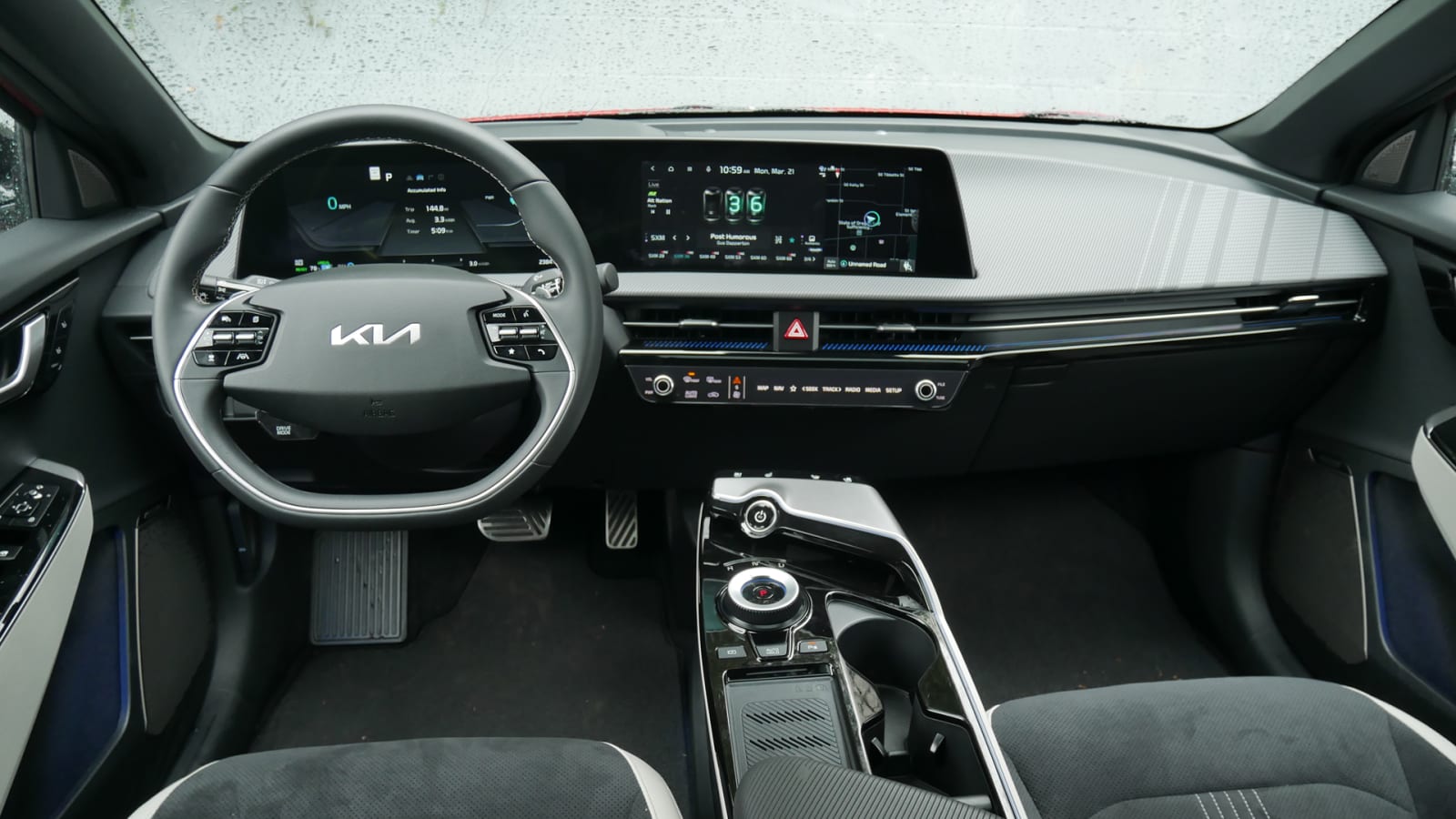
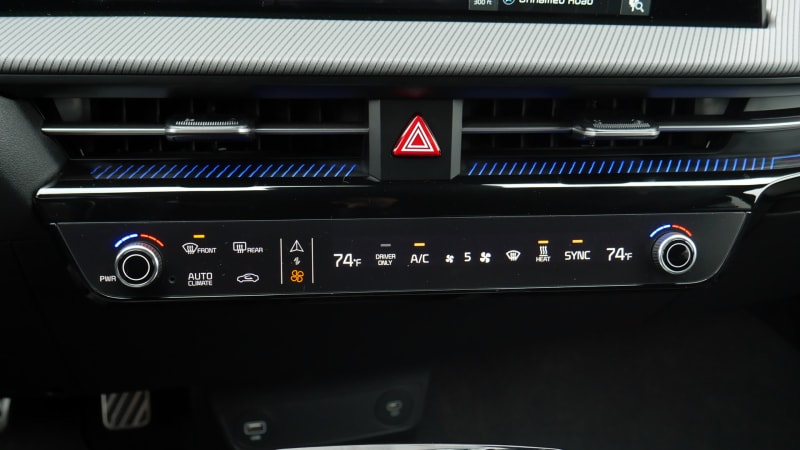
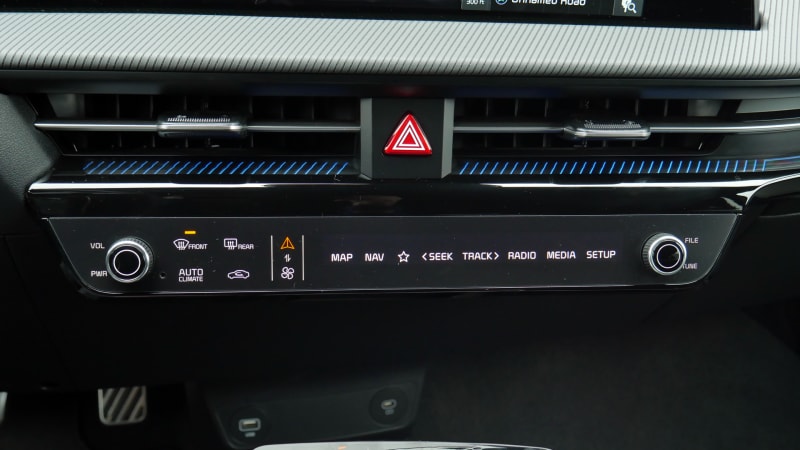
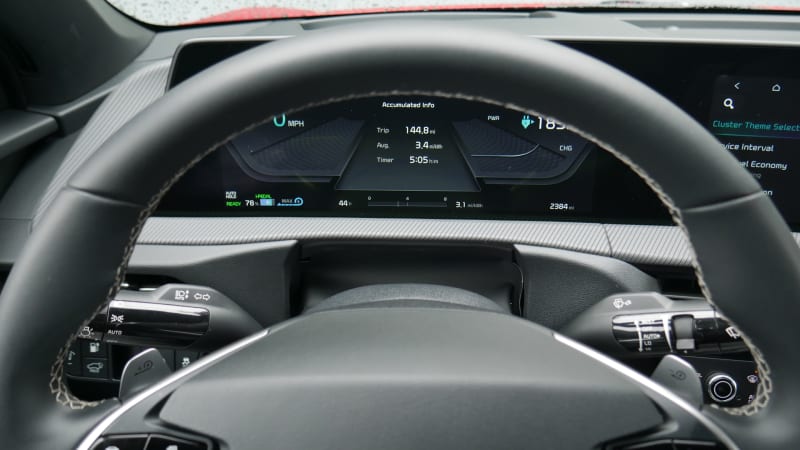
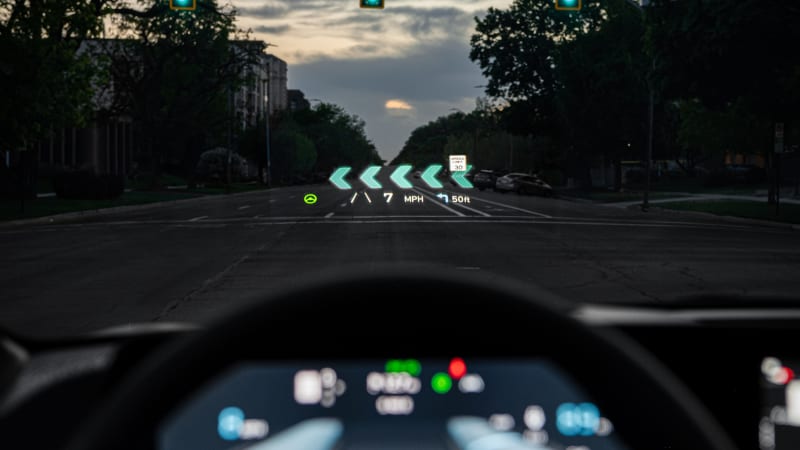
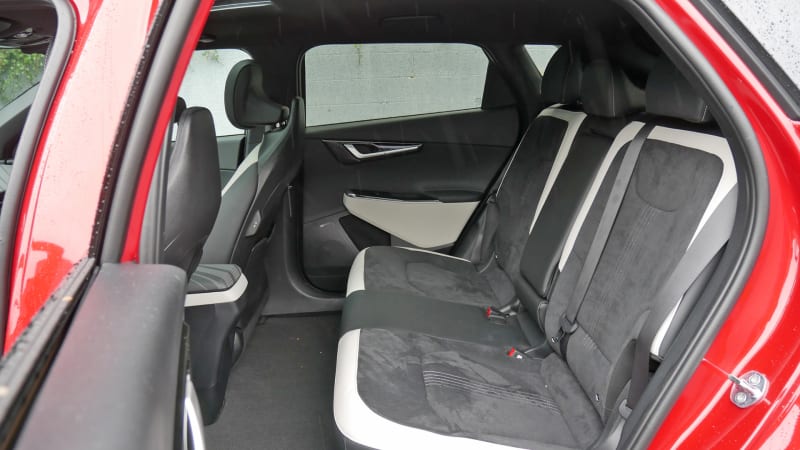
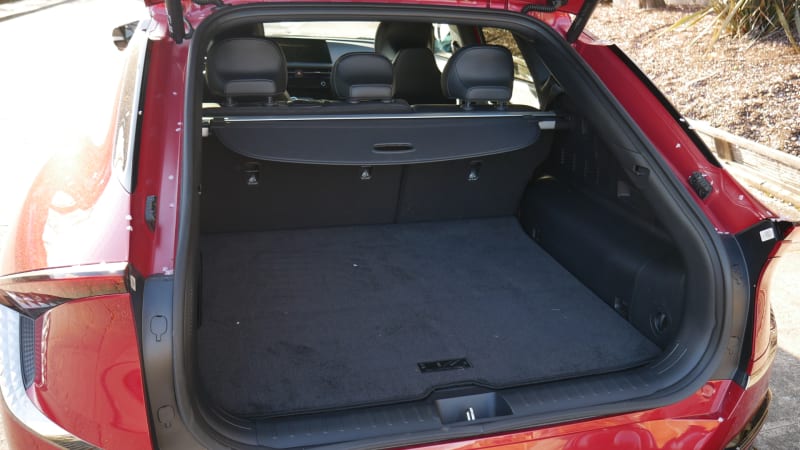
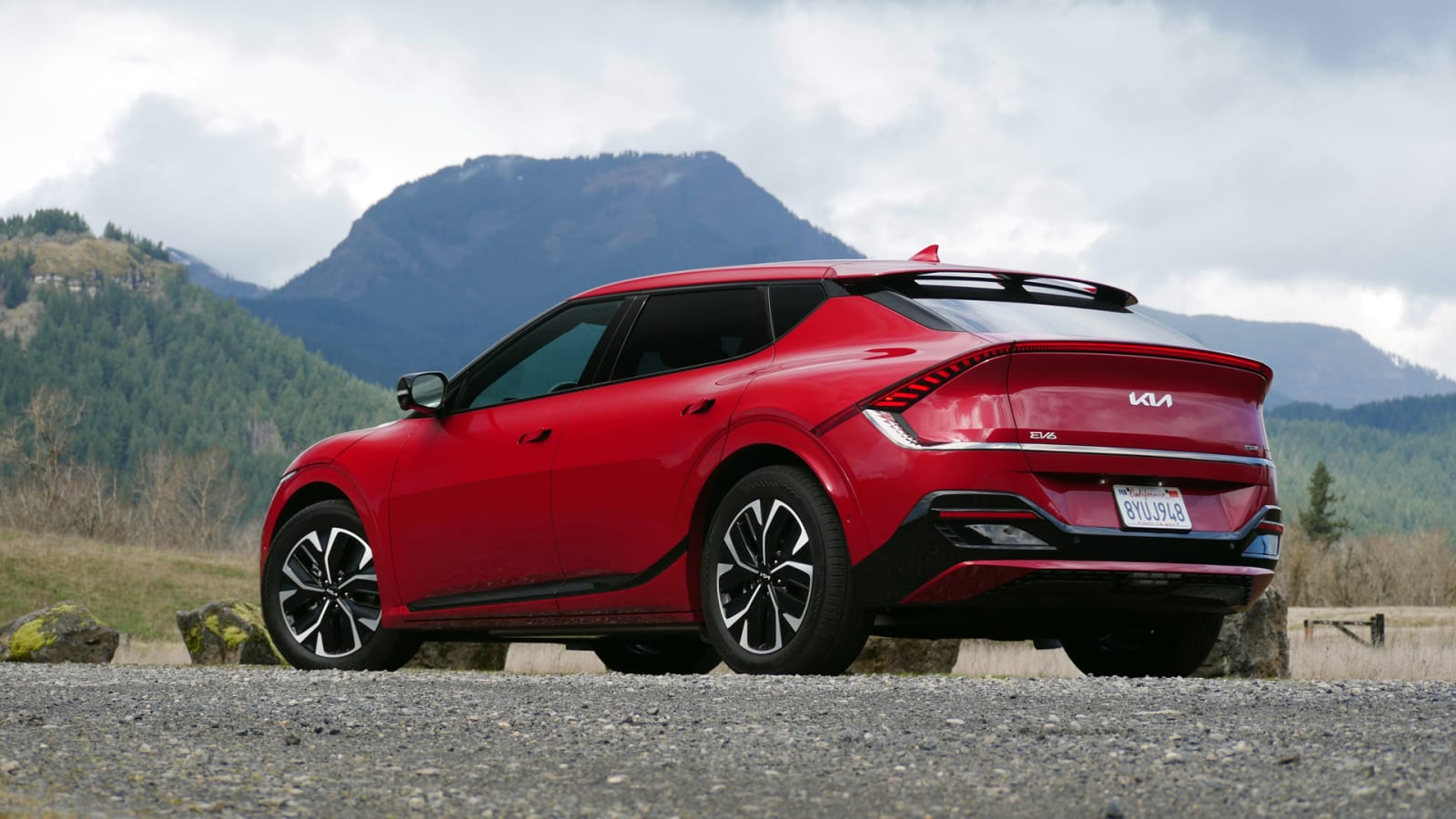
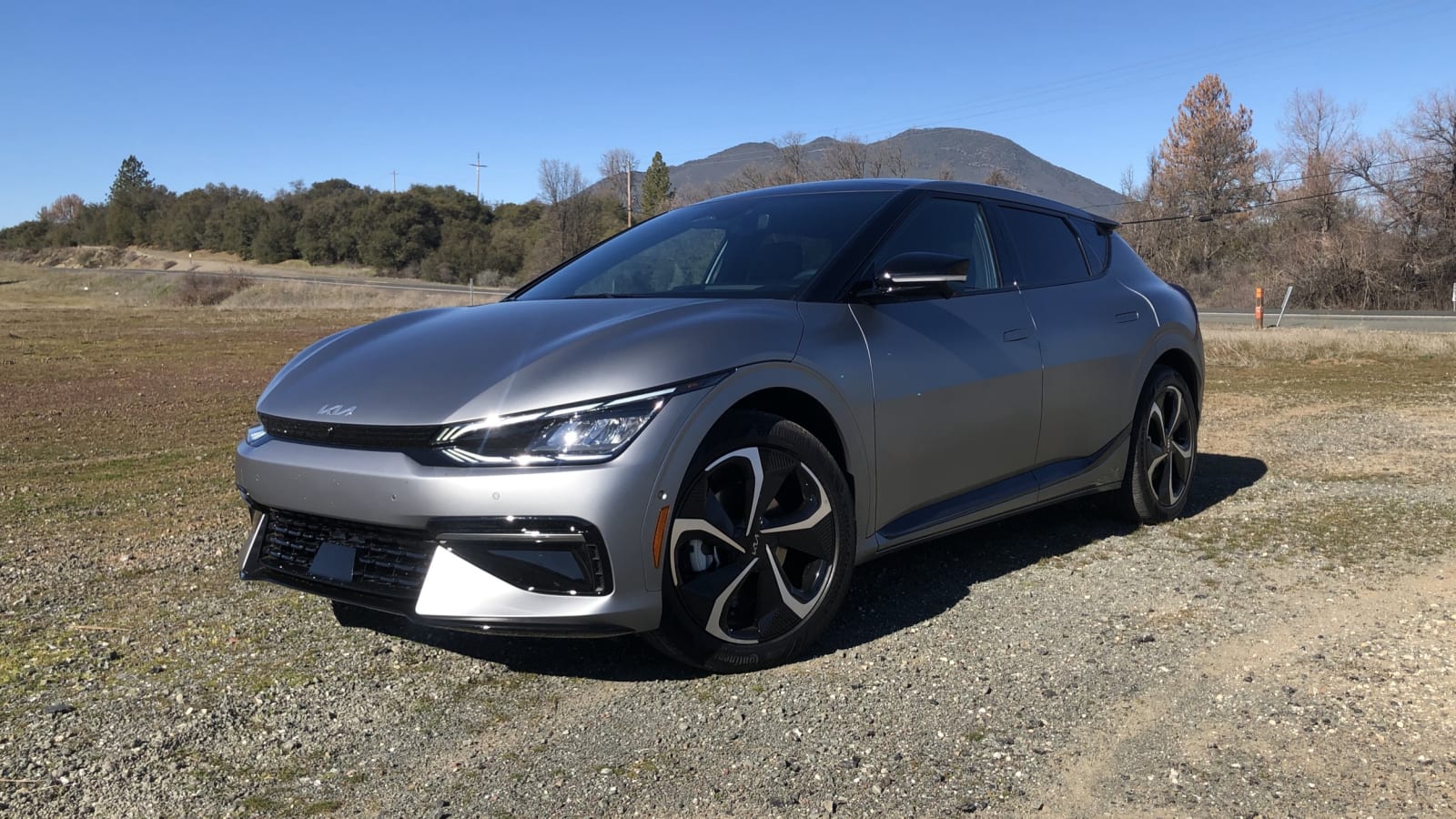
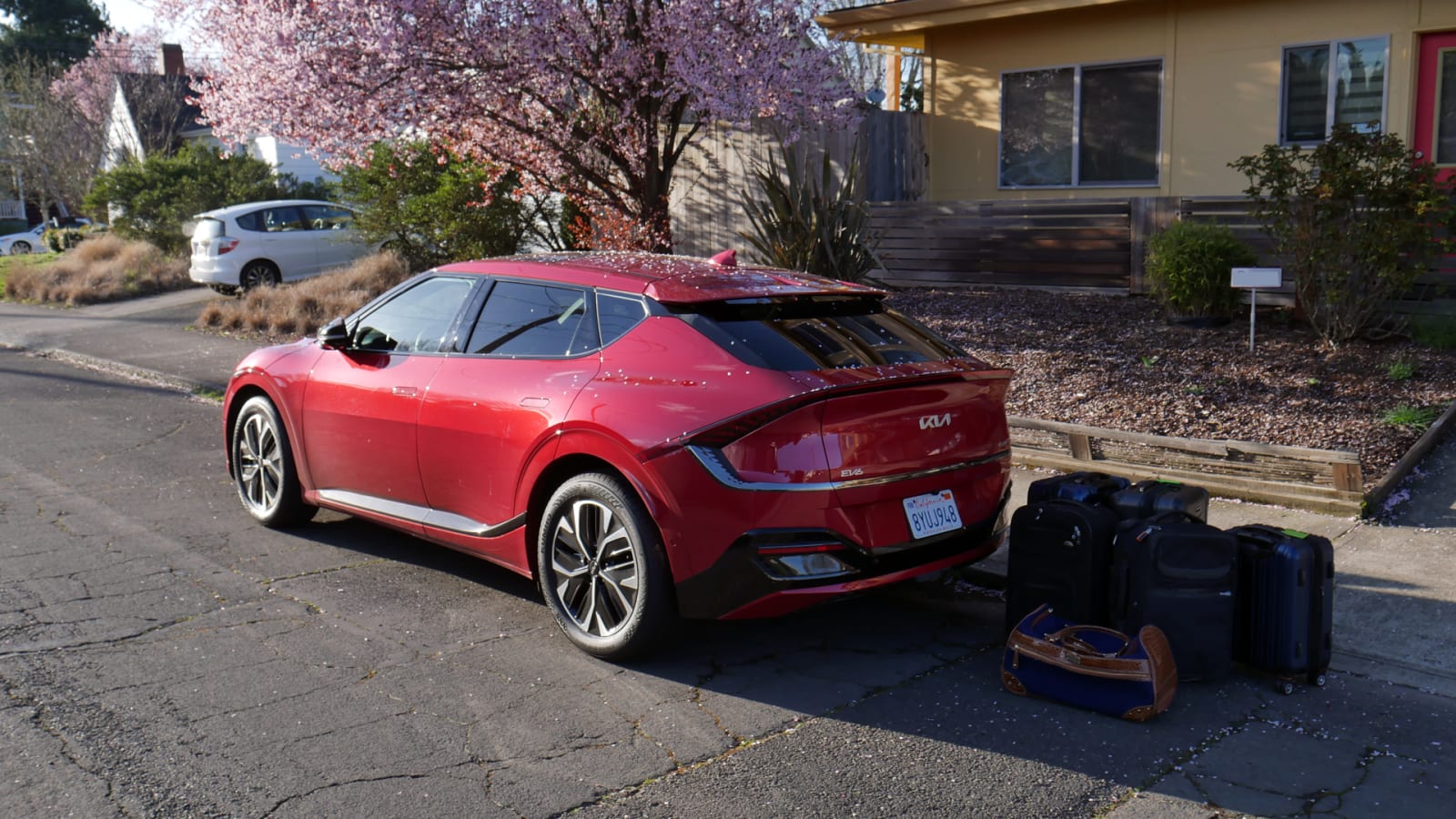
Comments are closed.